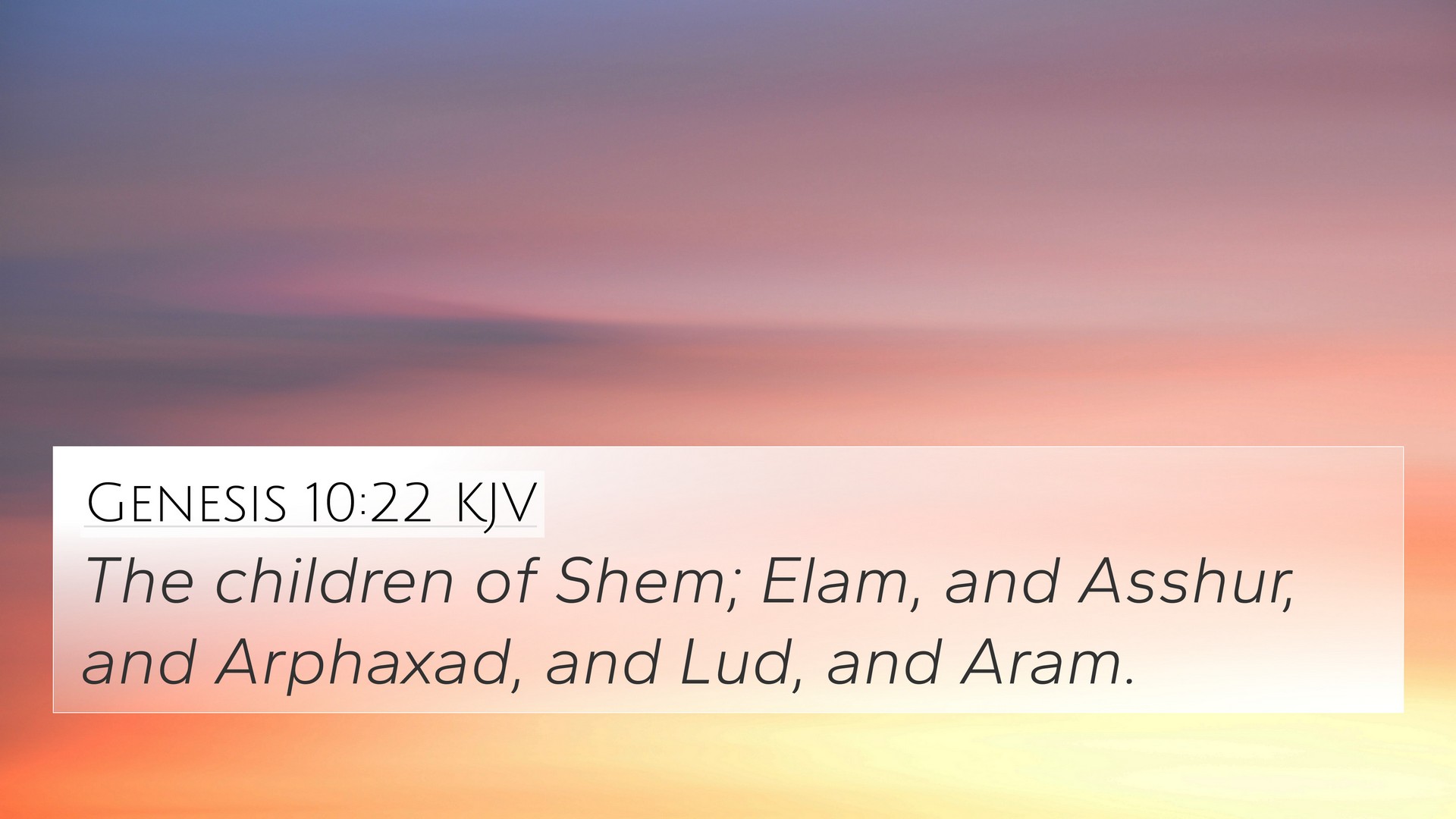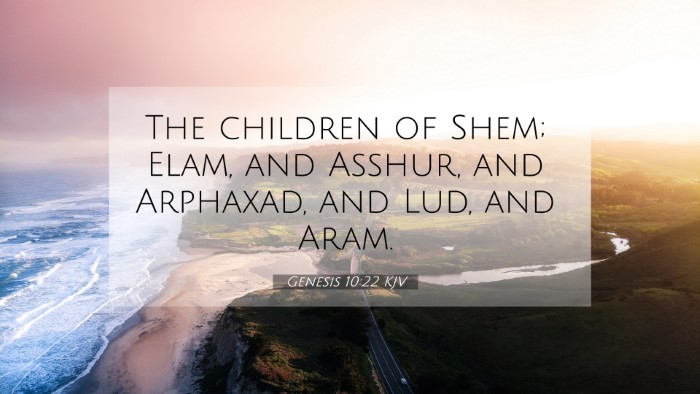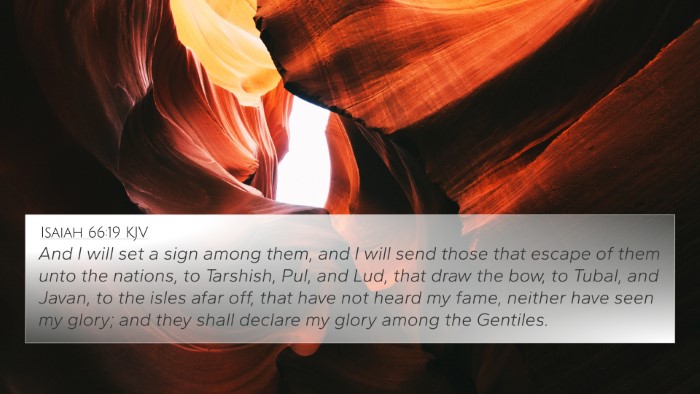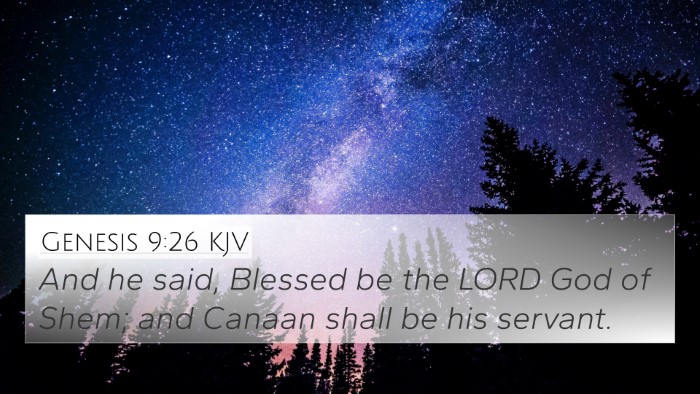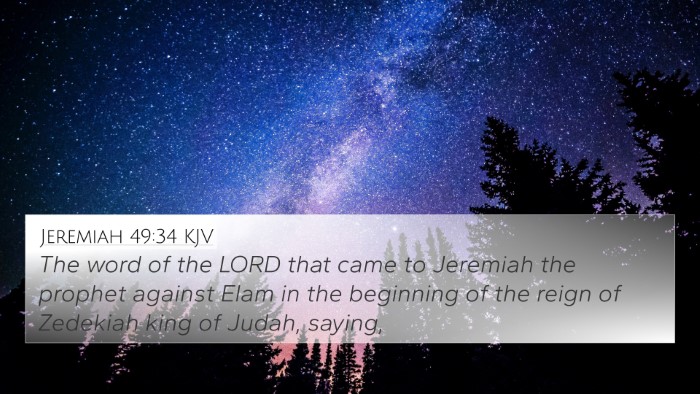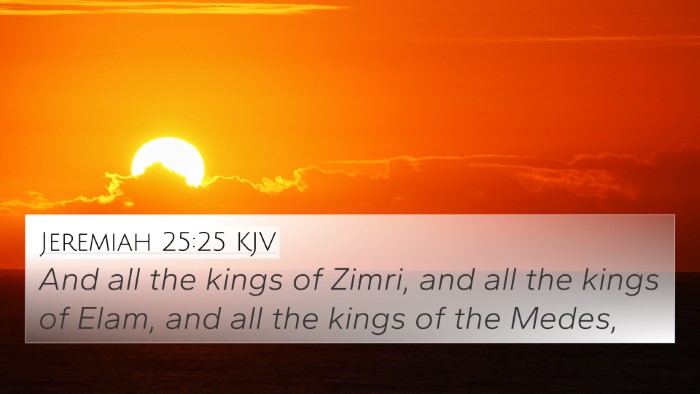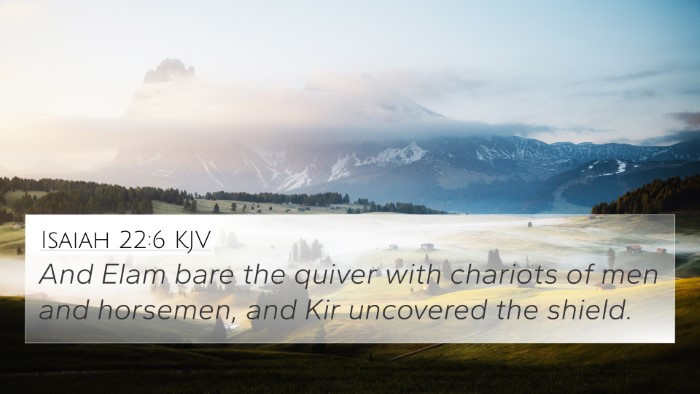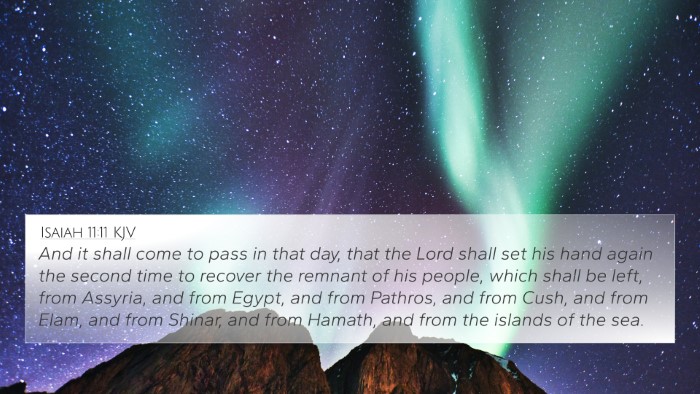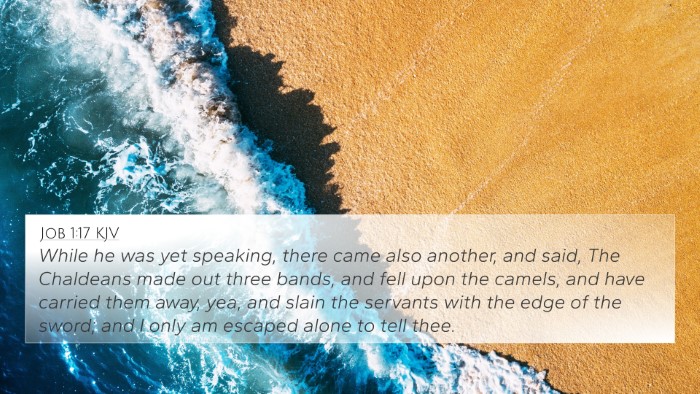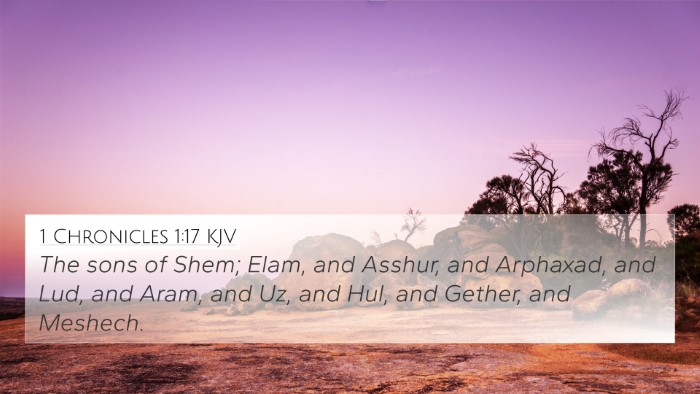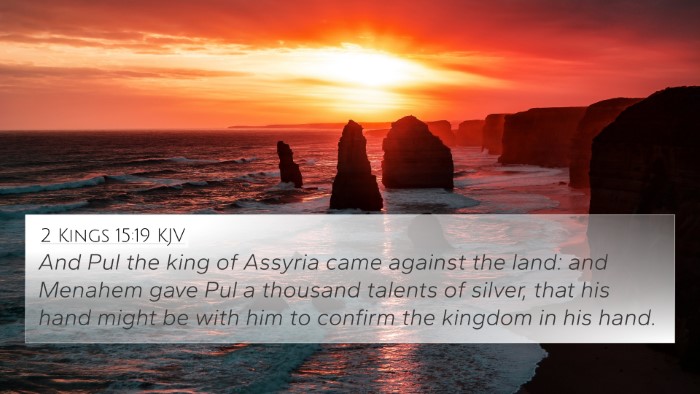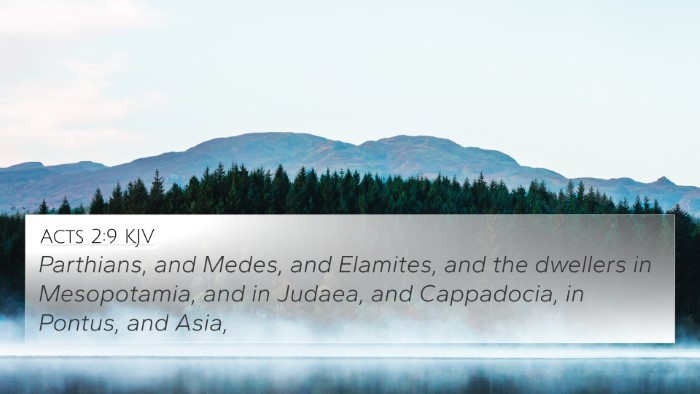Understanding Genesis 10:22
Genesis 10:22 states: "The children of Shem; Elam, and Asshur, and Arphaxad, and Lud, and Aram." This verse marks a crucial point in biblical genealogies, pinpointing the descendants of Shem, one of the three sons of Noah. The study of this verse not only traces the lineage of humanity post-flood but also provides significant insights into the origins of various nations.
Significance of the Verse
Genesis 10:22 mainly serves as a historical account of Shem’s descendants, with each name representing different tribes and nations. It is essential to link this genealogical data with broader scriptural themes, which sheds light on God’s plan for humanity’s restoration.
Commentary Insights
- Matthew Henry: He emphasizes that this genealogy glorifies God’s providence in preserving a righteous line from which Abraham and subsequently the Israelites came, showcasing how God's covenant continues through generations.
- Albert Barnes: Barnes highlights the geographical implications of the names mentioned, illustrating how these descendants settled in regions that contributed to the cultural and historical landscape of the Near East.
- Adam Clarke: Clarke focuses on the etymology of the names, explaining that these familial links are foundational in understanding the relationships between different nations and peoples expressed throughout the Bible.
Thematic Connections
Genesis 10:22 connects with broader biblical themes, emphasizing God's overarching plan for humanity. The careful recording of lineages expresses the importance of heritage and the unfolding of God’s promises through specific lines of descent.
Bible Cross-References
- 1 Chronicles 1:17: Reaffirming the genealogy of Shem and his descendants, providing further historical context.
- Luke 3:36: This New Testament verse links back to Shem through the genealogy of Jesus, illustrating the continuity of God's plan across Testaments.
- Acts 2:9-10: Lists peoples from these regions during Pentecost, indicating their significance in biblical history.
- Hebrews 7:14: Refers to Jesus coming from Judah, while also acknowledging the importance of the priestly line of Aaron from Levi.
- Genesis 14:1: Mentions peoples descended from Shem’s descendants during Abram’s time, showcasing their influence.
- Jeremiah 49:34-39: Prophetically speaks of how relations between these descendants and the nations play out in biblical prophecy.
- Revelation 10:11: Connects the prophetic messages to nations, hinting at the last days and ties to the descendants of Shem.
Cross-Referencing Biblical Texts
The genealogies found in Genesis are not merely historical records; they are integral for cross-referencing themes across various Scriptural narratives. By identifying connections between Old and New Testament verses, readers glean deeper insights into God’s unfolding plan.
Comparative Bible Verse Analysis
Through cross-referencing scripture, one can see how the descendants of Shem impacted both their immediate region and the broader biblical narrative. For example, studying how Shem's descendants relate to the development of the nations of Israel and their essential role in biblical prophecy enhances understanding of God’s covenant.
The Importance of Cross-Referencing
To effectively study the Bible, one should utilize tools for Bible cross-referencing. A Bible concordance can assist one in locating specific verses or themes, while a Bible cross-reference guide can offer deeper insight into similar themes and connections throughout scripture.
How to Use Cross-References
- Identify key terms from Genesis 10:22 related to Shem’s descendants.
- Utilize a cross-reference Bible study to identify similar verses that provide context and depth.
- Engage with comprehensive Bible cross-reference materials for an in-depth understanding of biblical connections.
- Discover the inter-Biblical dialogue between these genealogies and the overall narrative of salvation across scripture.
Conclusion
Genesis 10:22 serves as more than a genealogical record; it is a link in the chain of God's promise to humanity. By employing cross-referencing methods, we can explore the intricate connections between various scripture passages and appreciate the continuity of God’s redemptive plan throughout the Bible.
In studying Genesis 10:22 and its related verses, we begin to see a tapestry woven through time — a divine narrative connecting people, places, and purposes as God guides history to its ultimate fulfillment.
